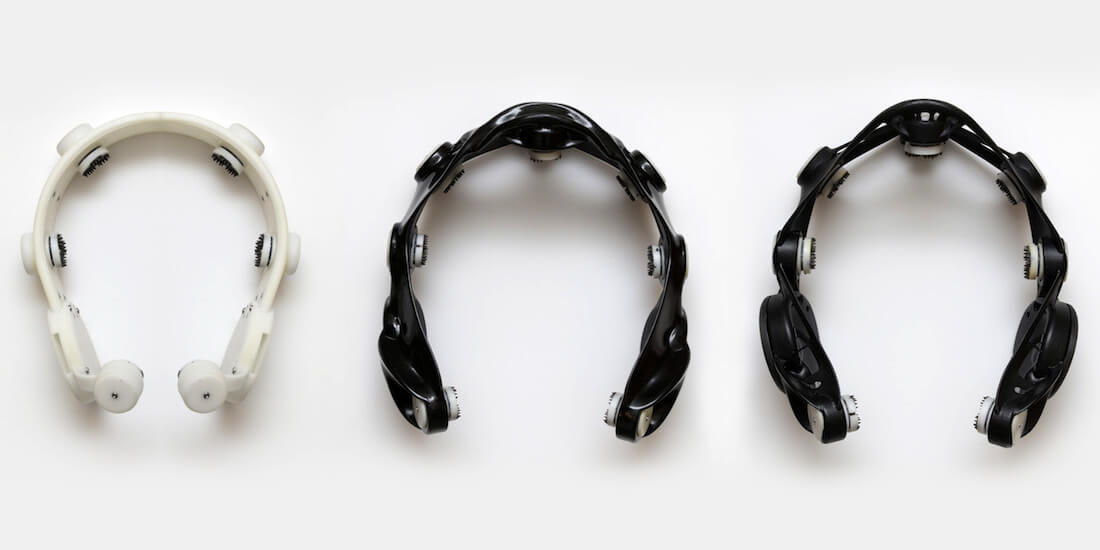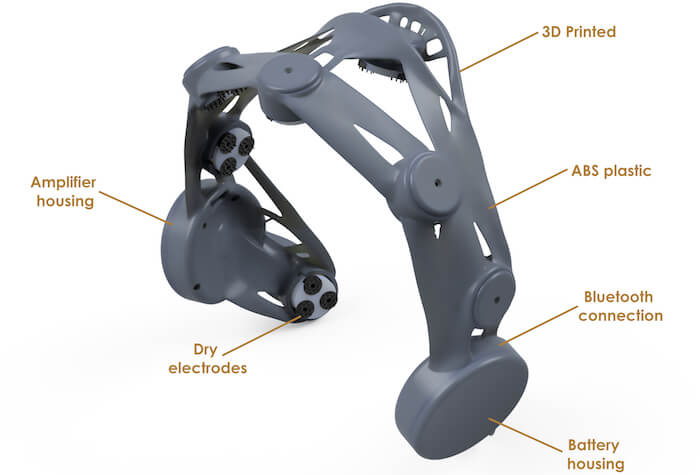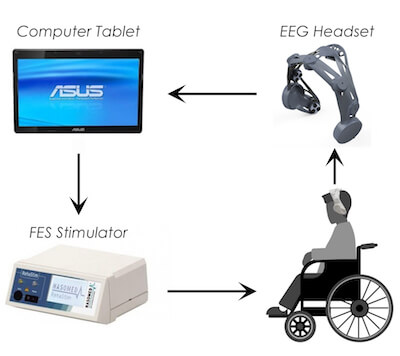For most spinal-cord injury patients, recuperation can be lengthy—spent in the hospital due to requirements for complex tests and accompanying technology. Working toward finding a better solution for everyone involved, a biomedical engineering PhD at Scotland’s University of Glasgow has 3D printed a headset for improving recovery.
Collaborating with HP and Autodesk, Nina Petric-Gray created a lightweight, durable headset for monitoring and recording the brain’s electrical activity with electroencephalography (EEG). Using Fusion 360 and a HP Multi Jet Fusion (MJF) 4200 3D printer, Petric-Gray’s goal was to create a functional model for restoring hand function in patients outside of the hospital setting. Sending electrical pulses to the patient’s body, causing hand movements, functional electrical stimulation is meant to treat paralysis patients who suffered from central nervous system injuries.

The EEG headset evolved from its original design using traditional CAD modeling on the left to the final design on the right, which used generative design in Autodesk Fusion 360. (Image courtesy of Nina Petric-Gray)
If you have ever had the unfortunate experience of an extended hospital (or rehab) stay, then most likely you remember getting little rest as doctors as nurses poked and prodded you all day and night. Homesickness usually sets in quickly, and most patients want nothing but to get home as quickly as possible. A 3D printed device like Petric-Gray’s could allow patients to recover at home, taking the burden off of hospitals and rehabilitative centers.

The labeled components of Petric-Gray’s final EEG headset design. (Image: Courtesy of Nina Petric-Gray)
Currently, tens of thousands of patients suffering from spinal-cord injuries are unable to recover outside of medical facilities; however, this bespoke device offers clear potential for affordable, customized, patient-specific treatment.
“As the headset model evolved into something quite complex, it became clear that FDM printed models would no longer be suitable owing to the vast amounts of processing they required,” said Petric-Gray. “The first time I saw the HP MJF printed headset I was blown away, it showed real progress from earlier models. It was perfect right out of the box, where others needed post-production touch ups.”
Working with PhD supervisor Aleksandra Vuckovic and co-supervisor Craig Whittet, Petric-Gray was inspired by typical gaming headsets in early prototyping for the new device, modifying the design for improved attachment of electrodes. As the project progressed, the PhD student began using HP 3D Multi Jet Fusion (MJF) printing for accurate customization. The benefits of 3D printing were being fully realized also, not only due to savings in production, but with the ability to make changes digitally, and quickly, without having to wait on a third party or waste materials.
“Although we’re only in the prototyping phase, 3D printing absolutely has the necessary advantages to be the means of end-product manufacture,” said Petric-Gray. “The ability to produce something bespoke to the patient and in such a short timeframe is a win-win in manufacturing terms. The technology gives us the potential to print a headset that’s integrated, with both frame and electrodes printed as one unified part, without having to construct anything afterwards”.
So far, the device has been through 15 different iterations (with a variety of different materials used) and has been tested on healthy patients, with more complex medical trials ahead, and plans to see it cleared for use in many other SCI patients soon. There is also the chance that the UK National Health Service (NHS) may even offer reimbursements if the device is fully commercialized for use in rehabilitation.
“We’re happy if they can get back reach, flex, and extension—basically the dexterity to grab something,” said Dr. Aleksandra Vuckovic, senior lecturer in rehabilitation engineering at the University of Glasgow. “We might expect better outcomes with stroke patients, as typically they have more preserved control of their hands, plus their injury is in the brain, so we directly target it with brain-computer interface (BCI). We can certainly help people become more independent and functional.”
Click here for an informative video.
3D printing has been the catalyst for changing the quality of patients’ lives around the world, from breakthroughs with 3D printed neural scaffolds meant to assist in regaining functionality, tissue engineering for customized treatment, and success with spinal implants for two complex cases in the Netherlands recently also.
[Source: HP; Autodesk]Subscribe to Our Email Newsletter
Stay up-to-date on all the latest news from the 3D printing industry and receive information and offers from third party vendors.
You May Also Like
Precision at the Microscale: UK Researchers Advance Medical Devices with BMF’s 3D Printing Tech
University of Nottingham researchers are using Boston Micro Fabrication‘s (BMF) 3D printing technology to develop medical devices that improve compatibility with human tissue. Funded by a UK grant, this project...
3D Printing Webinar and Event Roundup: April 21, 2024
It’s another busy week of webinars and events, starting with Hannover Messe in Germany and continuing with Metalcasting Congress, Chinaplas, TechBlick’s Innovation Festival, and more. Stratasys continues its advanced training...
3D Printing Webinar and Event Roundup: March 17, 2024
It’s another busy week of webinars and events, including SALMED 2024 and AM Forum in Berlin. Stratasys continues its in-person training and is offering two webinars, ASTM is holding a...
3D Printed Micro Antenna is 15% Smaller and 6X Lighter
Horizon Microtechnologies has achieved success in creating a high-frequency D-Band horn antenna through micro 3D printing. However, this achievement did not rely solely on 3D printing; it involved a combination...






























